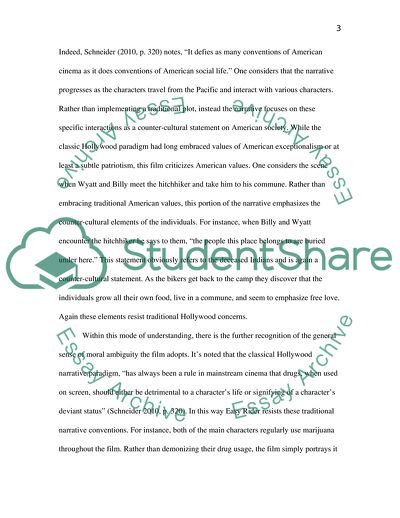Cite this document
(Easy Rider and Bonnie and Clyde Hollywood Films Movie Review, n.d.)
Easy Rider and Bonnie and Clyde Hollywood Films Movie Review. Retrieved from https://studentshare.org/visual-arts-film-studies/1779859-making-detailed-reference-to-two-classical-hollywood-films-discuss-how-they-exemplify-andor-problematize-the-accepted-formal-paradigm-of-classical-narrative
Easy Rider and Bonnie and Clyde Hollywood Films Movie Review. Retrieved from https://studentshare.org/visual-arts-film-studies/1779859-making-detailed-reference-to-two-classical-hollywood-films-discuss-how-they-exemplify-andor-problematize-the-accepted-formal-paradigm-of-classical-narrative
(Easy Rider and Bonnie and Clyde Hollywood Films Movie Review)
Easy Rider and Bonnie and Clyde Hollywood Films Movie Review. https://studentshare.org/visual-arts-film-studies/1779859-making-detailed-reference-to-two-classical-hollywood-films-discuss-how-they-exemplify-andor-problematize-the-accepted-formal-paradigm-of-classical-narrative.
Easy Rider and Bonnie and Clyde Hollywood Films Movie Review. https://studentshare.org/visual-arts-film-studies/1779859-making-detailed-reference-to-two-classical-hollywood-films-discuss-how-they-exemplify-andor-problematize-the-accepted-formal-paradigm-of-classical-narrative.
“Easy Rider and Bonnie and Clyde Hollywood Films Movie Review”. https://studentshare.org/visual-arts-film-studies/1779859-making-detailed-reference-to-two-classical-hollywood-films-discuss-how-they-exemplify-andor-problematize-the-accepted-formal-paradigm-of-classical-narrative.


